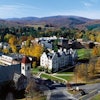DENVER
Black and Hispanic schoolchildren don’t fare as well as White and Asian classmates in math, reading, writing and science across a wide range of Colorado schools, new state figures show.
From Cherry Creek High School in Denver to the Yuma School District in northeastern Colorado, Colorado Student Assessment Program test results show many schools have trouble bring all their students to the same level, The Denver Post reported last week.
“The achievement gap exists on all economic levels,” said Glenn E. Singleton, director of the California-based Pacific Educational Group and a consultant for Cherry Creek Schools.
At Cherry Creek High, 82 percent of White ninth-graders were proficient or better on last year’s CSAP writing test, but only 41 percent of Hispanic ninth-graders could write at their grade level.
Only 7 percent of Hispanic students at Douglas County High School were proficient at their grade level in math, compared with 71 percent of Asian students.
At Park Hill elementary in Denver, 92 percent of White students in fourth grade were proficient in reading, compared with 37 percent of Black students.
The state Department of Education now sorts CSAP test results by ethnicity and sex to comply with the federal No Child Left Behind Act. Previously, those breakdowns were not available.
“School-level folk and district-level folk need to look at this data, and if they see gaps like that they need to look at steps that can be taken,” said Zollie Stevenson of the U.S. Department of Education.
Allison Boggs, principal at Casey Middle School in Boulder, said performance gaps at her school reflect an influx of recent immigrants and native Spanish-speakers. She said students improve from year to year in every category.
Educators in other districts offered similar explanations.
Kevin Welner, the director of the Education Public Interest Center at the University of Colorado, said the achievement gaps can be traced to a number of factors, including home environment and the schools themselves.
“The one thing we know is that it’s absolutely a combination,” he said.
Singleton, the Pacific Educational Group consultant, said school districts often ignore the role of race in performance gaps and instead point to students’ socio-economic status, mobility and language issues or a lack of parental support.
“We have to be able to change the nature of this conversation,” Singleton said. “How can you take credit for the kids who are successful but not take responsibility for kids who are not?”
—Associated Press
© Copyright 2005 by DiverseEducation.com















